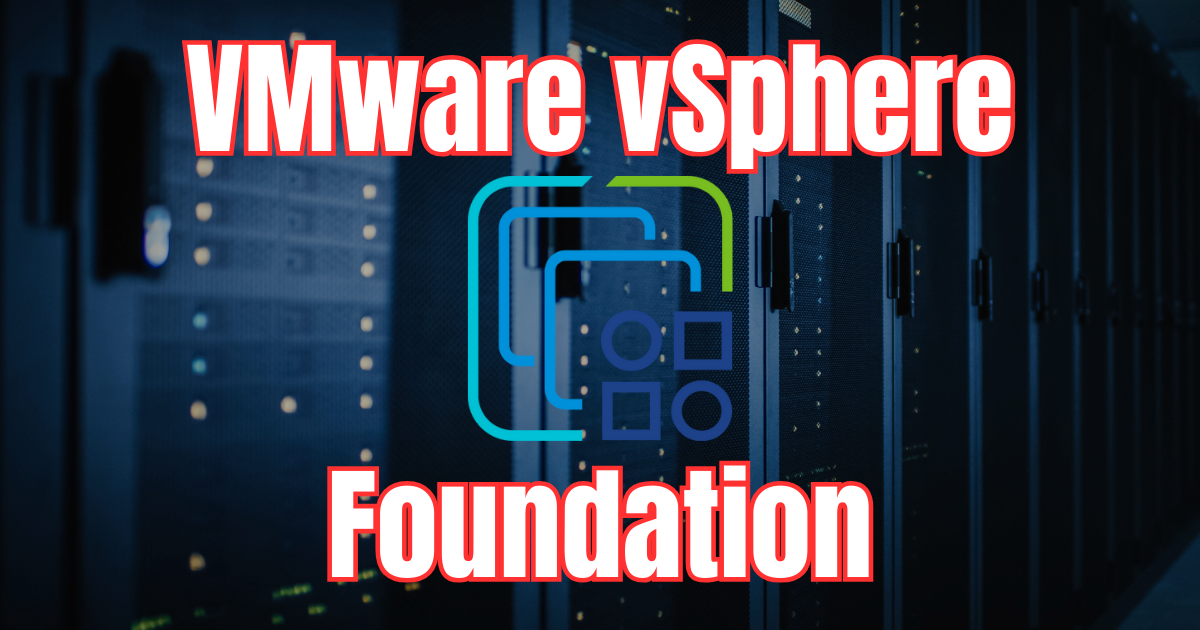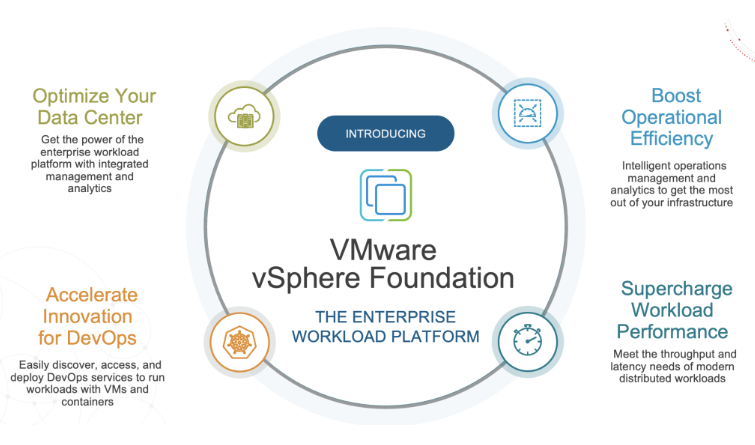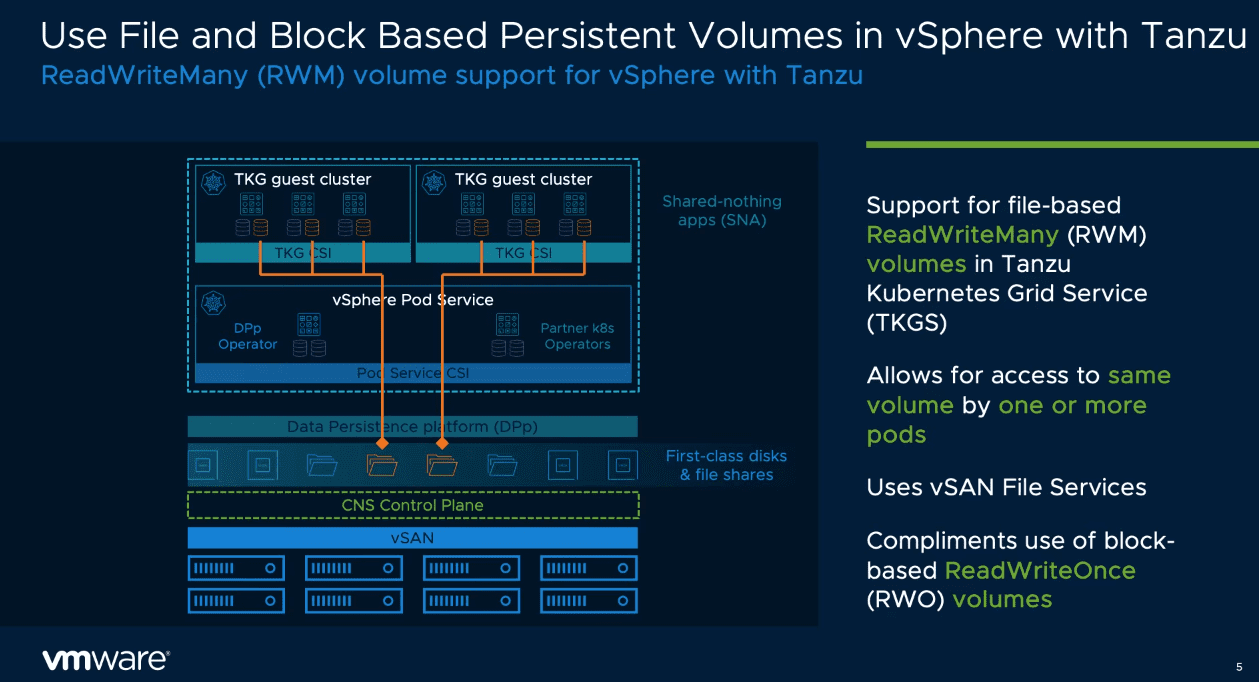If you have been following the developments with the finalizing of the Broadcom buyout of VMware, you have seen there has been a drastic shift in how the new VMware by Broadcom is offering its products and solutions. Gone are the days of perpetual licensing and a new era of subscription-based licensing. You may have heard that a new subscription-based offering called VMware vSphere Foundation is the new way forward for the more traditional VMware vSphere solutions. However, what is VMware vSphere Foundation?
Table of contents
- New VMware vSphere Foundation and current offerings moving forward
- VMware’s Shift From Perpetual Licenses to Subscription
- More details on VMware vSphere Foundation
- Components that make up VMware vSphere Foundation
- Where do the changes leave partners?
- Wrapping up VMware vSphere Foundation a new Era for VMware and customers
New VMware vSphere Foundation and current offerings moving forward
To begin, let’s understand what happened after the December 11, 2023 announcement. This was when VMware documented the beginning of simplifying its portfolio of hybrid cloud solutions. To be fair, the VMware portfolio of products and solutions was enormous before the simplification of the VMware software catalog. So, from that perspective, having a simpler catalog is certainly welcomed and eliminates some complexity understanding what products and solutions you need.
Now, with the changes, there are essentially (2) offerings for VMware customers for simplicity:
- VMware Cloud Foundation (VCF) – This is the solution that customers have known for a while now that includes VMware’s full stack infrastructure platform. This includes vSphere, vSAN, NSX for micro-segmentation and other security features, and the full Aria Management platform.
- VMware vSphere Foundation (VVF) – This is the new solution for VMware’s traditional on-premises environment deployments with vSphere. It includes the core components, with ESXi and vCenter Server you can run on your physical infrastructure.
- Interestingly, you can still purchase vSphere Standard and the vSphere Essentials Plus SKUs for small deployments or number of servers. When it is all said and done, it is made up of the same components that customers are used to having for performance, flexibility, efficiency, and scalability of their applications on top of a VMware IT environment. Customers get vCenters, clusters, vMotion, HA, automated updates, and the other basics. It is just packaged differently now.
VMware mentions there are add-on services and options you can purchase to add specific functionality if you need specific features and capabilities from other single solutions (AI, etc).
Note the following add-ons that are available:
- VMware Cloud Disaster Recovery – for data protection
- VMware Ransomware Recovery
- VMware Site Recovery Manager
- vSAN Enterprise (Expansion)
- VMware Load Balancer (NSX Advanced Load Balancer)
- Tanzu Mission Control
VMware’s Shift From Perpetual Licenses to Subscription
A key aspect of this evolution is VMware’s shift from perpetual licensing to a subscription model. This transition, crucial for VMware Cloud and VMware vSphere, reflects a broader industry move towards more flexible, scalable solutions, particularly for managing complex virtual infrastructures using a more SaaS like model, like you would find in AWS, GCP, Microsoft, etc.
More details on VMware vSphere Foundation
Let’s consider a few more details on VMware vSphere Foundation, what it sets out to do, what it offers, and other details. As mentioned above, it is a new offering that bundles the traditional vSphere components together into a single solution for on-premises enterprise workloads.
According to VMware and the official introduction blog documentation here, they note the following benefits in resources cost and other areas:
- 20% reduction in hardware costs
- 50 reduction in MTR
- 93% reduction in downtime
VMware says that customers looking to purchase vSphere Enterprise Plus (now no longer offered) or vCloud Suite Standard can see perhaps as much as 50% savings with a 3-year subscription. For deployment plans moving forward for enterprises, what is recommended for businesses provisioning IT infrastructure running VMs and containers and managing multiple clouds?
VMware recommends the new VMware vSphere Foundation offering as the transition path for those currently using vSphere Enterprise Plus or vCloud Suite Standard as the base of their virtualization technology architecture.
Components that make up VMware vSphere Foundation
Note the following components that make up VMware vSphere Foundation:
- vSphere Enterprise Plus
- vSphere ESXi
- Tanzu Kubernetes Grid
- vCenter Standard vCenter
- Aria Suite Standard
- Aria Operations
- Aria Operations for Logs
- Aria Suite Lifecycle
- vSAN Enterprise, including vSAN Max (this is an add-on you can add to the VMware vSphere Foundation solution, and is licensed with100 GiB per CPU Core per host), licensing will need to account for the cores in the CPU socket in this new consumption model)
- Production Support
Current catalog of products:
| Products no longer available as standalone (all editions and pricing metrics) | Replacement Product Included in VCF/VVF/Add-on? (Y/N) | Which Product or Add-On? |
| VMware vSphere Enterprise Plus | Y | VCF, VVF |
| VMware vSphere+ | N | |
| VMware vSphere Enterprise | N | |
| VMware vSphere Standard (excluding subscription) | Y | Replaced with new vSphere Standard |
| VMware vSphere ROBO | N | |
| VMware vSphere Scale Out | N | |
| VMware vSphere Desktop | N | |
| VMware vSphere Acceleration Kits | N | |
| VMware vSphere Essentials Kit | N | |
| VMware vSphere Essentials Plus (excluding new subscription offering) | Y | Replaced with vSphere Essentials Plus Kit |
| VMware vSphere Starter/Foundation | N | |
| VMware vSphere with Operations Management | N | |
| VMware vSphere Basic | N | |
| VMware vSphere Advanced | N | |
| VMware vSphere Storage Appliance | N | |
| VMware vSphere Hypervisor (free edition) | N | |
| VMware Cloud Foundation (excluding new VCF subscription offering) | N | |
| VMware Cloud Foundation for VDI | N | |
| VMware Cloud Foundation for ROBO | N | |
| VMware SDDC Manager | Y | VCF |
| VMware vCenter Standard | Y | VCF, VVF and vSphere STD |
| VMware vCenter Foundation | N | |
| VMware vSAN | Y | VCF, VVF, vSAN add-on |
| VMware vSAN ROBO | N | |
| VMware vSAN Desktop | N | |
| VMware vSAN+ | N | |
| VMware HCI Kit | N | |
| VMware Site Recovery Manager | Y | SRM Add-On Service |
| VMware Cloud Editions/Cloud Packs | N | Replaced with VCF, VVF |
| VMware vCloud Suite | N | Replaced with VCF, VVF |
| VMware Aria Suite (formerly vRealize Suite) | Y | VCF, VVF |
| VMware Aria Universal Suite (formerly vRealize Cloud Universal) | N | |
| VMware Aria Suite Term | Y | VCF, VVF |
| VMware Aria Operations for Networks (formerly vRealize Network Insight) | Y | VCF |
| VMWare Aria Operations for Networks Universal (formerly vRealize Network Insight Universal) | N | |
| VMware vRealize Network Insight ROBO | N | |
| VMWare Aria Operations for Logs (formerly vRealize Log Insight) | Y | VVF, VCF |
| VMware vRealize Operations 8 Application Monitoring Add-On | N | |
| VMware Aria Operations | Y | VVF, VCF |
| VMware Aria Automation | Y | VCF |
| VMware Aria Suite Cloud for US Public Sector | N | |
| VMware Aria Automation for Secure Hosts add-on (formerly SaltStack SecOps) | Y | Tanzu Guardrails Add-On |
| VMware vRealize Automation SaltStack SecOps add-on | Y | Tanzu Guardrails Add-On |
| VMware Aria Operations for Integrations (formerly vRealize True Visibility Suite) | Y | VCF, VVF |
| VMware Cloud Director | Y | VCF (CSP only) |
| VMware Cloud Director Service | N | |
| VMware NSX | Y | VCF and VMware Firewall (with ATP) |
| VMware NSX for Desktop | Y | VCF and VMware Firewall (with ATP) |
| VMware NSX ROBO | Y | VCF and VMware Firewall (with ATP) |
| VMware NSX Distributed Firewall | Y | VCF and VMware Firewall |
| VMware NSX Gateway Firewall | Y | VCF and VMware Firewall |
| VMware NSX Threat Prevention to Distributed Firewall | Y | VCF and VMware Firewall (with ATP) |
| VMware NSX Threat Prevention to Gateway Firewall | Y | VCF and VMware Firewall (with ATP) |
| VMware NSX Advanced Threat Prevention to Distributed Firewall | Y | VCF and VMware Firewall (with ATP) |
| VMware NSX Advanced Threat Prevention to Gateway Firewall | Y | VCF and VMware Firewall (with ATP) |
| VMware Advanced Load Balancer | Y | VMware Avi Load Balancer Add-On (also standalone) |
| VMware Container Networking Enterprise with Antrea | Y | VCF and VMware Firewall |
| VMware HCX | Y | VCF |
| VMware HCX+ | N |
VMware Cloud Foundation: Still around
The VMware Cloud Foundation solution is still a cornerstone solution from VMware by Broadcom. It provides VMware’s hybrid cloud computing solution for virtual infrastructure, including virtual machines and containers with its SDDC Manager. VMware Cloud Foundation is the solution to enable data center capabilities across multiple locations, edge data centers, and multiple vCenter Servers linked together. This solution still fits in the mold of the new way forward for VMware for a hybrid data center approach.
With VMware Cloud Foundation, you also get the VMware NSX component that allows administrators to have the capability to provide organizations with the tools for modern network configuration across their data centers to meet their connectivity requirements. You can also add on the NSX Advanced load balancing solution to your VMware Cloud Foundation installation to have modern load balancing for Tanzu Kubernetes.
Where do the changes leave partners?
Despite the simplification of the product portfolio and the new way forward, there has been quite a backlash from VMware partners managing many VMware customer accounts. These have worked with VMware products and solutions for decades now. Along with the changes in the product portfolio, Broadcom terminated existing partner agreements, which has led to quite a bit of fallout. I am a long-time VMware administrator, and I really love the product, as most of those who will read this blog likely do.
However, with all the changes, there is definitely a feeling of uncertainty among admins, businesses, partners, and others. I do think the changes are monumental and could certainly affect whether or not customers choose to renew with VMware or move to another vendor.
I do think VMware has the best virtualization solution out there. However, it is not just about the technology. It is about confidence in the overall ecosystem, partners, resellers, cost, and the whole nine yards. The recent changes have definitely sent shockwaves across the industry. Time will tell whether or not the decisions made by Broadcom overall were the right move.
Wrapping up VMware vSphere Foundation a new Era for VMware and customers
Until the dust settles, there is still a lot of fear, uncertainty, and doubt among the entire industry. The changes made by Broadcom have been described as a “tectonic” shift in the world of virtualization. They are certainly not trivial. I do like that there has been a simplification in the product catalog as VMware previously had a monumental product list that could be difficult to navigate. Let me know in the comments. How are you and your companies handling the new VMware by Broadcom changes? Are you staying with VMware or are you exploring options like migrating to a different hypervisor platform? If you are, post your thoughts and comments to the forum thread here: Migrating from VMware to another hypervisor.
Google is updating how articles are shown. Don’t miss our leading home lab and tech content, written by humans, by setting Virtualization Howto as a preferred source.





